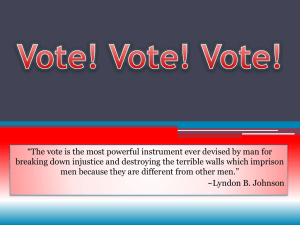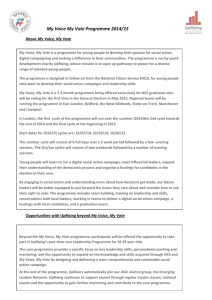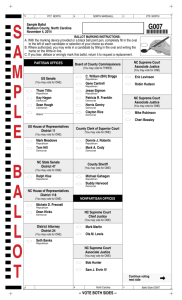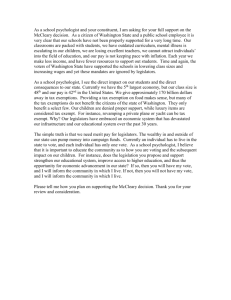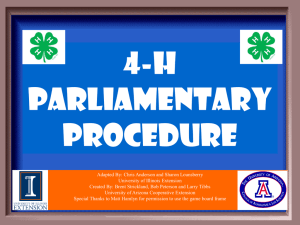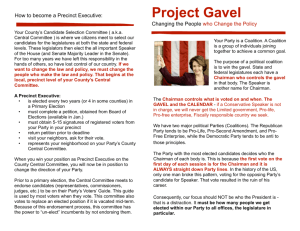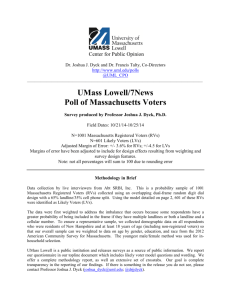Section 1.4 Examples
advertisement
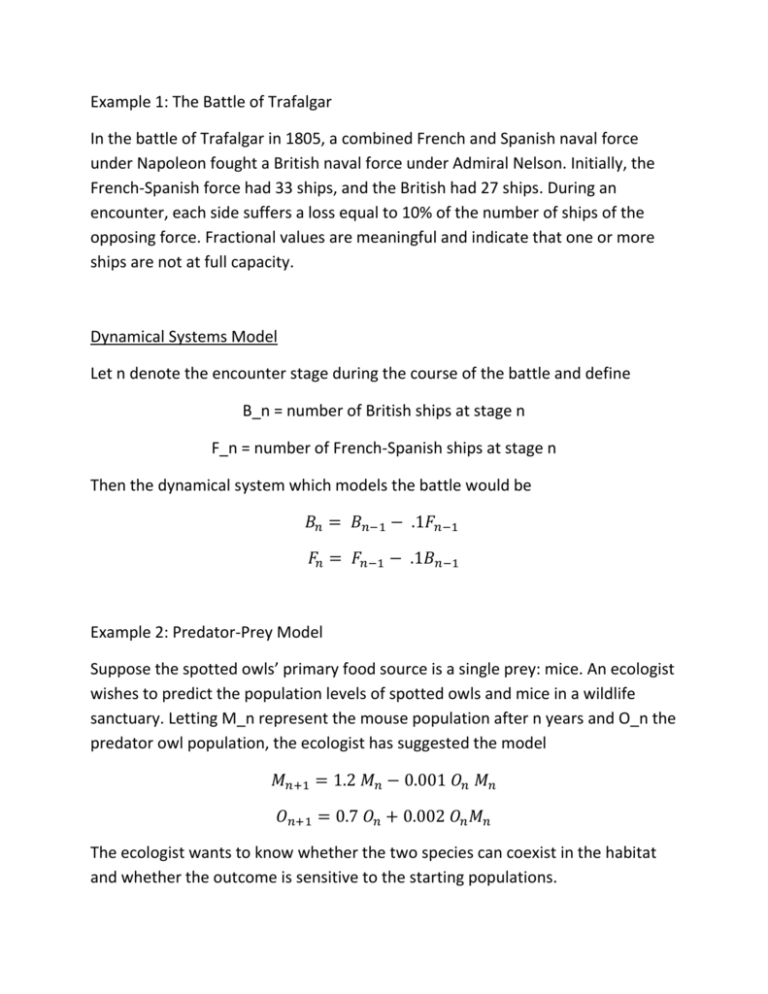
Example 1: The Battle of Trafalgar In the battle of Trafalgar in 1805, a combined French and Spanish naval force under Napoleon fought a British naval force under Admiral Nelson. Initially, the French-Spanish force had 33 ships, and the British had 27 ships. During an encounter, each side suffers a loss equal to 10% of the number of ships of the opposing force. Fractional values are meaningful and indicate that one or more ships are not at full capacity. Dynamical Systems Model Let n denote the encounter stage during the course of the battle and define B_n = number of British ships at stage n F_n = number of French-Spanish ships at stage n Then the dynamical system which models the battle would be 𝐵𝑛 = 𝐵𝑛−1 − .1𝐹𝑛−1 𝐹𝑛 = 𝐹𝑛−1 − .1𝐵𝑛−1 Example 2: Predator-Prey Model Suppose the spotted owls’ primary food source is a single prey: mice. An ecologist wishes to predict the population levels of spotted owls and mice in a wildlife sanctuary. Letting M_n represent the mouse population after n years and O_n the predator owl population, the ecologist has suggested the model 𝑀𝑛+1 = 1.2 𝑀𝑛 − 0.001 𝑂𝑛 𝑀𝑛 𝑂𝑛+1 = 0.7 𝑂𝑛 + 0.002 𝑂𝑛 𝑀𝑛 The ecologist wants to know whether the two species can coexist in the habitat and whether the outcome is sensitive to the starting populations. To solve the system above for its equilibrium values, we want to solve the system of equations 𝑀 = 1.2 𝑀 − 0.001 ∗ 𝑂 ∗ 𝑀 𝑂 = 0.7 ∗ 𝑂 + 0.002 ∗ 𝑂 ∗ 𝑀 Using the solve command in Mathematica, we find the equilibrium solutions are (M,O) = (0,0) and (M,O) = (150,200). Test the following initial conditions and observe the long-term behavior of the model: Case 1 Case 2 Case 3 Case 4 Owls 150 150 100 10 Mice 200 300 200 20 Case 1 Case 2 Case 3 Case 4 Mice 150 150 100 10 Owls 200 300 200 20 Example 3: Voting Tendencies of the Political Parties Consider a three-party system with Republicans, Democrats, and Independents. Assume that in the next election, 75% of those who voted Republican again vote Republican, 5% vote Democrat, and 20% vote Independent. Of those who voted Democrat before, 20% vote Republican, 60% again vote Democrat, and 20% vote Independent. Of those who voted Independent, 40% vote Republican, 50% vote Democrat, and 10% again vote Independent. Assume that these tendencies continue from election to election and that no additional voters enter or leave the system. Analyze the dynamical system, equilibrium values, and sensitivity to initial conditions.


